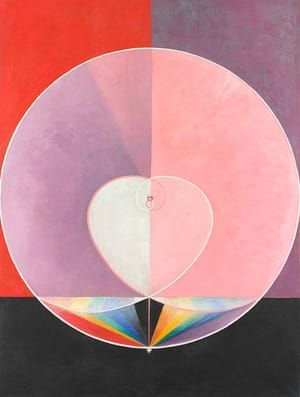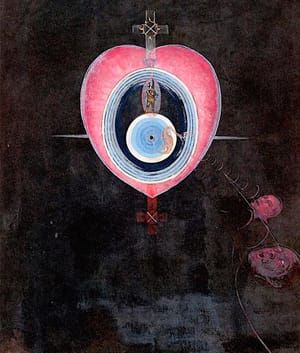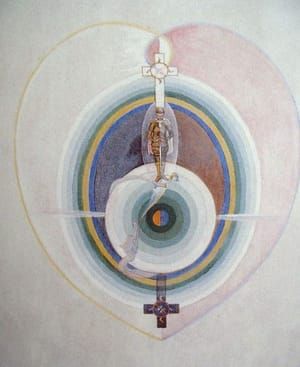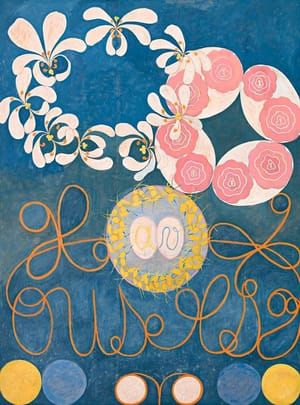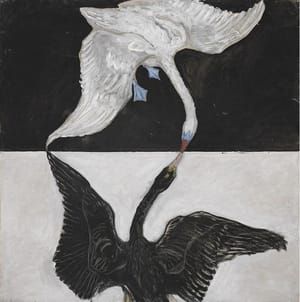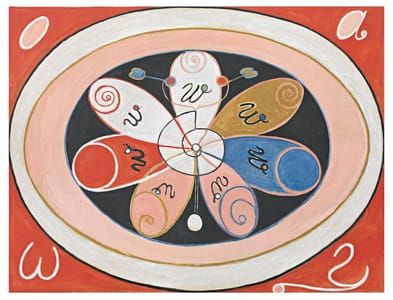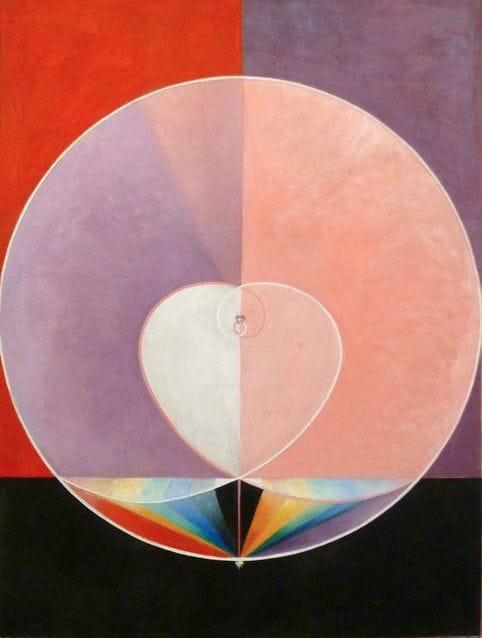

The Dove No. 2, from Group IX Series SUW/UW, 1914-1915
Hilma af Klint
Before Swedish artist Hilma af Klint died in 1944, she stipulated that her work should not be shown until 20 years after her death. She felt the world was not yet ready for it. But it was not the forms of her art for which the world was unprepared, so much as the mystic truths it contained.
A first encounter with af Klint’s art is to meet a slowly ticking time-bomb. There are all kinds of pointers to her world-view. The iconography of doves, swans, serpents, dogs, snails, hearts and crosses, her spirals, circles and plumb-lines, encircled worlds and bisected discs, her painted letters and words, presage an art yet to come, from geometric abstraction to the monochrome. But this, in a way, is my projection.
We now look back at af Klint, in her first exhibition in Britain for a decade, in the same way we return to Kandinsky and Mondrian, as if abstraction was always out there, like an unmapped continent. If they had a compass, it was the same one as af Klint, whose stature has grown since the 1980s. All three held similar beliefs, and were guided by a mishmash of esoteric thought. Theosophy, Rudolf Steiner’s anthroposophy, alchemy and scientific discovery were all in there, though only a few now see their art as a conduit for messages from the beyond.
Af Klint was much concerned with the posterity of her art, and meticulously photographed and made small transcriptions of her works. Her sketchbooks, like her paintings, are a revelation. In them we find pages of automatic writing, juddering and tempestuous abstractions that recall Henri Michaux’s mescaline drawings, and lean and spare compositions that make me think of Sol LeWitt. But this is looking with a kind of hindsight that af Klint did not have. She sensed a different unseen world, a different kind of revelation.
Advertisement
With their colour symbolism, male and female principals, their stasis and turmoil, quiverings and mirrorings, af Klint’s paintings are embedded in the ideas of her time.... (http://www.thegorgeousdaily.com/hilma-af-klint/)
Uploaded on Oct 15, 2017 by Suzan Hamer
Hilma af Klint
artistArthur
Wait what?
